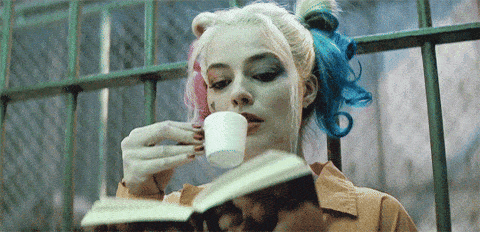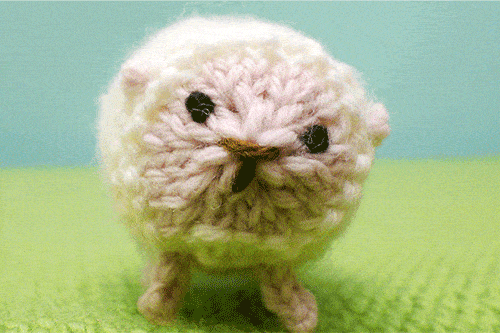Character 101: Building Relationships & Backgrounds
- Alina Wells

- Jan 28, 2020
- 7 min read

I find that as a writer what interests me most about people is why they do the things they do. I spend a lot of time people-watching, trying to puzzle out what makes people tick and who they are when they think no one is watching. The results of my observations vary, but generally speaking the most common motivator we all share is the people who we spend our time with. Our relationships and backgrounds are a large part of what makes us, well, us.
The characters in your story are no different. How they were raised, what their family is like, where they grew up, who their friends are, and who they choose to be in a relationship with all reflect who they are as a person. As readers, we want to know who they love, who they hate, and all the natural drama that unfolds from maintaining ever-evolving ties with others. Today we'll be exploring ways to establish these ties and how to make your characters relationships realistic.
1. Observe and Reflect on Real Relationships

I think the best way to approach this exercise is to find somewhere to sit in a public place. The busier the better. Parks and coffee shops are my preferred people-watching places, but anywhere with a good amount of foot traffic and people doing other activities will work. Begin by looking around and taking note of what interactions are going on. You'll start noticing certain things right away. Who is meeting up with a friend and who is meeting someone completely new. Who is happy to be there, and who is not. Which groups are related, which couples are actually "together", and which pairs are just friends.
Now reflect on the relationships you have with the people in your own life. Why are they in your life? What qualities do they have that draws you to them? What is the nature of your relationship? By drawing comparisons you'll start to see that each one is unique. Each person that is in your life brings something to the table that you need or enjoy. The same should be true of the people you create to be in your protagonist's life.
Another way you can draw inspiration from real life is by looking at the people you know and seeing if anyone shares similar traits to the character you are trying to create. Say the friend of your protagonist is the "mom" friend of their friend group. Look for people you know who share the same characteristics. Once you've found one that works, think about the following:

Think about these traits and how they affect this person's relationships with others. Relationships have natural highs and lows, with conflicts or disagreements peppered in. This should be mirrored by the relationships you highlight within in your story. If your relationships come off as "too perfect" your readers will lose interest fast simply because they recognize that no one is perfect. They also don't want to read about someone with the "perfect" life. Why? Because it's boring.
2. Define What Their Relationship Is & What History They Have Together (If Any)

This one goes back to when you first started brainstorming your protagonist. Now it's time to bring their life experiences into the mix and think about any friends or family that might have popped into the picture while you were free writing about them. By now you should have a pretty decent understanding of who your character is and some of the things they have experienced.
Start by outlining their family members. Then move on to friends, and lastly any previous romantic relationships they may have been apart of. Define their relationship with each person and explore how their upbringing has affected their overall personality. Ask yourself why they are friends with the people they have chosen. What do they like best about them? Least? Why do they get along so well? Now do the same for their romantic history. Find out what the relationship was like. What attracted them to their former/current partner? How does your character show their love for them?
By asking yourself these questions you add to the knowledge-base you've already built. It's always better to have a complete and total understanding of who your protagonist is. You can accumulate as much detail as you feel necessary, and then withhold some of it from your readers once you actually begin to write your story. You can then weave in the tiny details when necessary.
3. Use Personality "Flaws" to Dictate Relationships
No one is perfect, especially not your main character! Since you already know what their flaws are, use those flaws to help them build or sabotage their own relationships. If your character has low self esteem, for instance, then perhaps they have trouble standing up to their overbearing mother. It may also keep them from approaching their "crush" and telling them how they feel. Maybe a character who has trust-issues is reluctant to get into a new relationship because they were previously betrayed by their childhood friend or burned by an ex.
You can also use their flaws to determine the ebb and flow of their current relationships. Even characters who are similar may at some point rub each other the wrong way, highlighting their differences. In Beautiful Creatures, Ethan and Lena are similar at heart, but when their relationship is put under stress by Lena's imminent birthday, where she may or may not become an evil castor, you see them buckle underneath the weight of it. They argue, and choose to handle the situation at hand differently. You see Lena lash out and Ethan get exasperated, even though typically they are both level-headed people.
4. Avoid Using "Love At First Sight"

Though "love at first sight" can happen, it doesn't happen THAT often. Not only is it slightly unrealistic, but to write a romance plot based on this type of first interaction doesn't leave you with a lot to work with. In fact, you're missing out on quite a few key moments that can be used to build up likeability, suspense, and interest.
Allowing for a proper build-up, especially for a romance-plot helps draw your audience into your story. Give them a chance meeting, make them wonder about each other, then have one seek the other out. Let them steal secret moments together. Build up the attraction and the heat. Put something or someone in their way that forces them to stay apart. Then have them figure out a way to overcome it.
You see examples of this in all sorts of places. Take Triss and Four in Divergent. Though Triss notices Four right away, she doesn't get the chance to really get to know him until the two have shared several smaller "run-in's". You see their tension-filled interactions during Triss's training, you see Four help her on numerous occasions because he doesn't want to see her fail. You see the pair slowly learning bits and pieces about each other while their mutual attraction grows over time. This makes their love story all the more believable by the time they do become an actual couple.
5. Let Their Relationships Have Highs and Lows
Relationships change as your story evolves because new factors enter into your protagonist's lives. If your protagonist meets a new potential love interest, then that will change the dynamic between your protagonist and their best friend. If your protagonist already has a partner, then this creates tension in the already existing relationship, and hostility between the lover and the new rival. Twilight's Bella-Edward-Jacob love triangle is a great example of this ever-changing dynamic between characters.
Likewise, Ron and Hermoine from Harry Potter start off disliking one another, to friends, to maybe-something-more, then to a fully recognized couple and beyond. But before they were ever an "official" couple, Ron had to deal with Victor Crump asking Hermoine out and the consequences of his jealousy.
The same can be said of protagonist/antagonist relationships. In Harry Potter, Harry's relationship with Draco Malfoy and Snape respectively evolves throughout the story. He swings between being bitter rivals with Malfoy, to feeling sorry for him later on when he finds out his family's awful backstory. He suspects Snape of helping Voldemort through the entire series, right up to the end, only to find out that Snape was protecting him all along.
6. Find Inspiration from the "Greats"

Romeo and Juliet, Elizabeth and Mr. Darcy, Scarlett O'Hara and Rhett Butler, Gatsby and Daisy, and Rose and Jack, are all examples of successful character relationships throughout literature (just to name a few!). By studying the way that other writers have crafted and developed their character's relationships you can learn how to make yours more believable, intriguing, and all-consuming.
Take notes on how these characters met, what their "getting-to-know-you" interactions were, what their arguments are like, and the ways they show love for one another. What traits do they have that complement each other? What types of differences create conflict between them?
You can do the same thing for your character's other relationships too. Study Frodo and Samwise, Harry, Ron, and Hermoine, Tyrion and Bronn for examples of friendships. Look at how Marmee from Little Women, Mrs. Weasley, and Mrs. Potts treat their respective children. Compare that to how Ned Stark, Tywin Lannister, and Mr. O'Hara from Gone With The Wind care for their offspring. Once you have a better understanding of what works for different types of relationships, you can emulate the same types of relationships in your own story effectively.
With all your protagonist's relationships, the most important thing you can do is to let them change slowly and naturally. Give them backstories, "flaws", and a realistic time-frame for the relationship to develop. Make sure they have realistic troubles and triumphs, and when you get stuck, draw inspiration from real life and literature. Before you know it you'll have engrossing relationships that readers will obsess over just as much as that of John Snow and Daenerys.






Comments